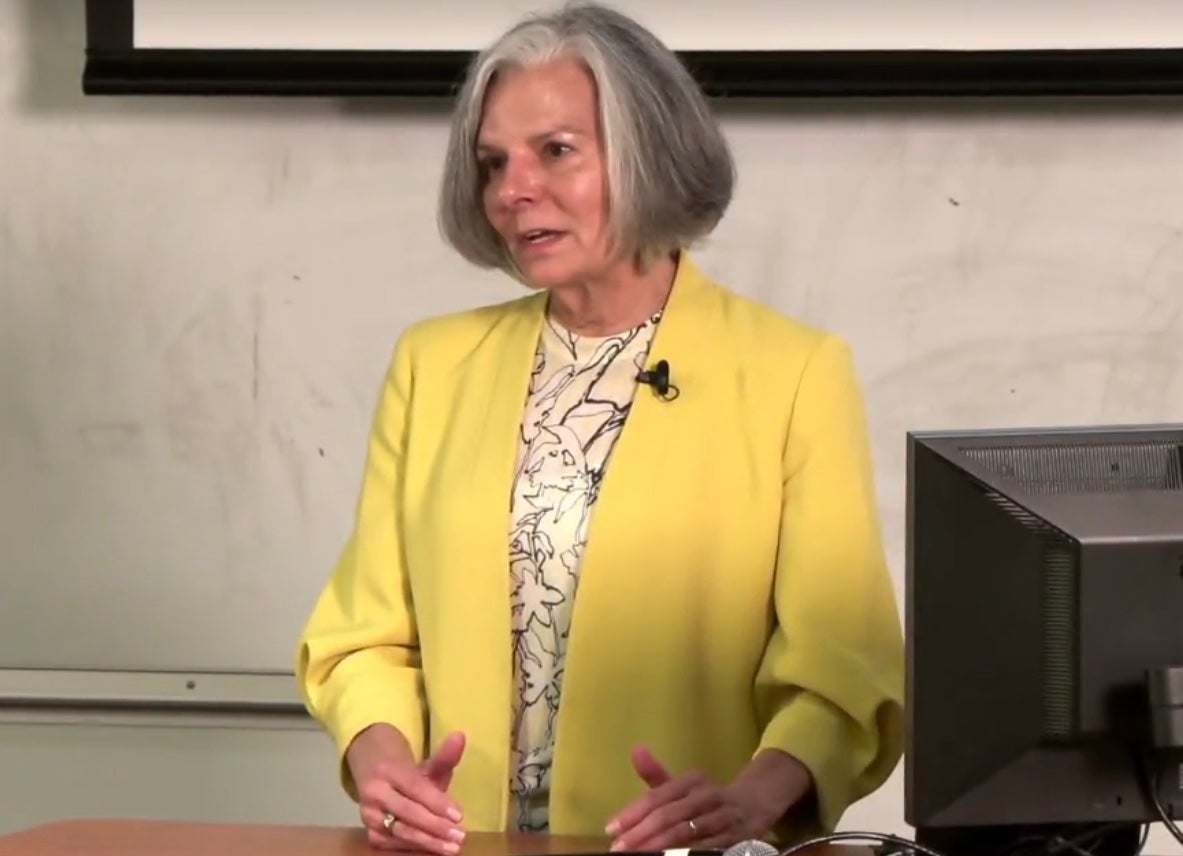John F. Brooks II Presents 2024 Richard J. Meyer Lecture
Dr. Brooks’ lecture explored his research into the connection between the circadian clock and immune function in the gut microbiome of mice.

John F. Brooks II, Ph.D., assistant professor at Princeton University, presented the second annual Richard J. Meyer Lecture recently on Nov. 8, 2024. Dr. Brooks is currently a Hanna Gray Fellow with the Howard Hughes Medical Institute, and was recently named a Pew Scholar in the Biomedical Sciences by the Pew Charitable Trusts. The title of Dr. Brooks’ lecture was The Circadian Clock Directs Daily Rhythms in Host-Microbe Interactions at the Intestinal Epithelial Barrier.
LCID Director Dr. Shelley Payne introduced the lecture by talking about Dr. Meyer and his legacy. She said his research focused on broad host range plasmids, how they replicate and how these genetic elements could spread to other bacteria. These broad host range plasmids often carry multiple drug-resistant elements and so can result in increasing drug resistance for infectious diseases. She said that Dr. Meyer also developed one of the first undergraduate research-based molecular biology courses. In this course, he worked individually with students to develop an independent research project to learn and apply the techniques of molecular biology. She noted, “Richard was a wonderful scientist, colleague, teacher and mentor . . . who instilled in students his love of science and experimentation.”
Brooks Discusses His Research on the Connections Between the Gut Microbiome of Mice, the Circadian Clock, and the Immune System
Dr. Brooks began his lecture by discussing the circadian clock, which is a biological timer that affects physiological behaviors such as feed-fasting and sleep-wake cycles based on daily rhythms in environmental light. The central clock, located in the brain, interprets these light cycles and then synchronizes the peripheral clocks throughout the body to affect biological processes.
Brooks’ lab at Princeton studies how the circadian clock affects the gut microbiome of mice which in turn influences their immune system. However, his lab is focused on not only understanding how circadian behaviors and cycles regulate immune function but more importantly, how these rhythms in immune function affect the microbiome in the gut and susceptibility to pathogens, such as Salmonella.
Dr. Brooks’ lecture highlighted the importance of serendipity in science. By chance he discovered the role of the circadian clock in regulation of an antimicrobial protein in mice when he was a postdoctoral researcher in Dr. Lora Hooper’s lab at UT Southwestern Medical School. A change in his schedule resulted in his taking samples from the mice at night, instead of only during the day, and he found that production of the antimicrobial protein Reg3 gamma, which he had not been able to detect during the day, peaked at night when the mice were in the dark. Brooks said that previous studies have shown that germ-free mice, which have no microbiome, do not express Reg3 gamma, indicating that the rhythms in Reg3 gamma expression are dependent on the circadian clock in conjunction with the microbiome.
Brooks and his colleagues at UT Southwestern began studying the mechanism of this regulation. He discovered that there were specific bacterial species that were consistently present in the microbiome when there were rhythms in Reg3 gamma production. To understand how these rhythms might affect susceptibility to infection, they used Salmonella typhimurium, a natural pathogen of mice. They found that the immune signaling pathway caused resistance to Salmonella typhimurium infection to vary throughout the day-night cycle. The feeding cycles in the mice worked with the microbiome to create rhythms in immunity that can increase resistance to Salmonella infection.
When Brooks moved to Princeton to start his own lab, he wanted to look at other antimicrobial proteins in addition to Reg3 gamma to see whether they also exhibit rhythms based on the circadian clock and/or feeding schedules. He began focusing on alpha defensins, another prominent class of antimicrobial proteins. Alpha defensins are rhythmic, but they peak during the afternoon and trough late in the evening. Dr. Brooks’ lab has found that this rhythm in alpha defensin production is not microbiome dependent. He said that it instead seems to be dependent on a cell intrinsic clock that promotes the rhythmicity. Furthermore, he said that “the circadian clock is synchronizing antimicrobial proteins to create the concentrations necessary to contain outgrowth of a potentially pathogenic bacteria.” Dr. Brooks’ lab will continue to examine and assess this process further in vivo.
About the Richard J. Meyer Endowment
The endowment for the Richard J. Meyer Endowed Lecture was established by LCID Director Shelley Payne and LCID Associate Director Jaquelin Dudley in memory of their friend and colleague. This endowment recognizes Dr. Meyer’s contributions to science and his training of Microbiology graduate students. The lectureship supports an annual lecture through the LaMontagne Center for Infectious Diseases to allow LCID faculty, students, and postdoctoral fellows to learn cutting edge information that will inspire their research.


